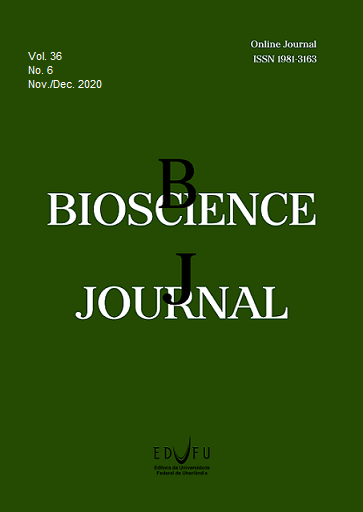Emergence flow of weeds as the result of temperature and luminosity conditions in hilly areas
DOI:
https://doi.org/10.14393/BJ-v36n6a2020-48034Keywords:
Climate changes., Germination., Management.Abstract
Levels of weed infestation can be inferred from climate information since every species requires specific conditions for its germination process. This study aimed to evaluate weed species and their emergence flow in hilly areas, when subjected to different environmental conditions of temperature and luminosity. Two experiments were carried out in a completely randomized design with four replications. In the first experiment, treatments used plastic films (no film; film just on top; partially closed film; and fully closed film), whereas the second experiment used black polyethylene covers (0; 35; 50; and 80%). Weed emergence in the area was monitored daily, until the establishment of the emergence flow. Soil temperature, solar radiation interception and soil moisture were also monitored. For the analysis of species subjected to every type and level of covers, phytosociological parameters and the emergence speed index were calculated. Data were submitted to analysis of covariance and, when they were significant, the Tukey test (p ≤ 0.05) was applied. A hierarchical cluster analysis was performed to relate factors and experimental levels to distribution intervals of climate covariates. Increase of 8.5°C in soil temperature favors the emergence of crabgrass, while reducing the emergence of alexander grass, morning glory, beggartick and sida. The main species that adapted to decrease in temperature and solar radiation are sida, alexander grass and crab grass. Besides, decrease in radiation increases the number of magnoliopsida species and enables all species to establish faster.
Downloads
Published
Issue
Section
License
Copyright (c) 2020 Renan Ricardo Zandoná, Dirceu Agostinetto, André da Rosa Ulguim, Rogério Costa Campos, Andrés Antonio Monge Vargas, Jéssica Dias Gomes da Silva

This work is licensed under a Creative Commons Attribution 4.0 International License.





